Cutting Performance of Microcrystalline, Nanocrystalline and Dual-Layer Composite Diamond Coated Tools in Drilling Carbon Fiber Reinforced Plastics
Abstract
:Featured Application
Abstract
1. Introduction
2. Experimental Details
2.1. Deposition and Characterization
2.2. Drilling Tests
3. Results and Discussion
3.1. Coating Characterization
3.2. Drilling Force Characterization
3.3. Tool Wear and Hole Quality
4. Conclusions
Author Contributions
Funding
Conflicts of Interest
References
- Hintze, W.; Clausen, R.; Schütte, C.; Kroll, K. Evaluation of the total cutting force in drilling of CFRP: A novel experimental method for the analysis of the cutting mechanism. Prod. Eng. 2018, 12, 431–440. [Google Scholar] [CrossRef]
- Iliescu, D.; Gehin, D.; Gutierrez, M.E.; Girot, F. Modeling and tool wear in drilling of CFRP. Int. J. Mach. Tool Manuf. 2010, 50, 204–213. [Google Scholar] [CrossRef]
- Ramirez, C.; Poulachon, G.; Rossi, F.; M’Saoubi, R. Tool wear monitoring and hole surface quality during CFRP drilling. Procedia CIRP 2014, 13, 163–168. [Google Scholar] [CrossRef] [Green Version]
- Henerichs, M.; Voß, R.; Harsch, D.; Kuster, F.; Wegener, K. Tool life time extension with nano-crystalline diamond coatings for drilling carbon-fibre reinforced plastics (CFRP). Procedia CIRP 2014, 24, 125–129. [Google Scholar] [CrossRef]
- Mkaddem, A.; Soussia, A.B.; Mansori, M.E. Wear resistance of CVD and PVD multilayer coatings when dry cutting fiber reinforced polymers (FRP). Wear 2013, 302, 946–954. [Google Scholar] [CrossRef]
- Wang, X.; Kwon, P.Y.; Sturtevant, C.; Kim, D.; Lantrip, J. Tool wear of coated drills in drilling CFRP. J. Manuf. Process. 2013, 15, 127–135. [Google Scholar] [CrossRef]
- Yiğit, K.; Burak, D.; Onur, B. Drilling thick fabric woven CFRP laminates with double point angle drills. J. Mater. Process. Technol. 2012, 212, 2117–2127. [Google Scholar] [CrossRef] [Green Version]
- Ma, Y.P.; Sun, F.H.; Xue, H.G.; Zhang, Z.M.; Chen, M. Deposition and characterization of nanocrystalline diamond films on co-cemented tungsten carbide inserts. Diam. Relat. Mater. 2007, 16, 481–485. [Google Scholar] [CrossRef]
- Salgueiredo, E.; Amaral, M. Mechanical performance upgrading of CVD diamond using the multilayer strategy. Surf. Coat. Technol. 2013, 236, 380–387. [Google Scholar] [CrossRef]
- Wang, X.; Shen, X.; Yang, G.; Sun, F. Evaluation of boron-doped-microcrystalline/nanocrystalline diamond composite coatings in drilling of CFRP. Surf. Coat. Technol. 2017, 330, 149–162. [Google Scholar] [CrossRef]
- Shabani, M.; Sacramento, J.; Oliveira, F.; Rui, S. Multilayer CVD diamond coatings in the machining of an al6061-15 vol % Al2O3 composite. Coatings 2017, 7, 165. [Google Scholar] [CrossRef]
- Kuo, C.; Wang, C.; Ko, S. Wear behaviour of CVD diamond-coated tools in the drilling of woven CFRP composites. Wear 2018, 398–399, 1–12. [Google Scholar] [CrossRef]
- Zhang, J.; Cui, Y.; Shen, B.; Sun, F. Effect of silicon doping in CVD diamond films from microcrystalline to nanocrystalline on WC-Co substrates. Surf. Rev. Lett. 2013, 20, 1350055-1. [Google Scholar] [CrossRef]
- Thowladda, W.; Khlayboonme, S.T. Plasma impedance tuning effect on nanostructure of diamond films. Appl. Mech. Mater. 2013, 394, 32–37. [Google Scholar] [CrossRef]
- Yang, T.S.; Lai, J.Y.; Cheng, C.L.; Wong, M.S. Growth of faceted, ballas-like and nanocrystalline diamond films deposited in CH4/H2/Ar MPCVD. Diam. Relat. Mater. 2001, 10, 2161–2166. [Google Scholar] [CrossRef]
- Montes-Gutiérrez, J.A.; Alcantar-Peña, J.J.; Obaldia, E.; Zúñiga-Rivera, N.J.; Chernov, V.; Meléndrez-Amavizca, R.; Barboza-Flores, M.; Garcia-Gutierrez, R.; Auciello, O. Afterglow, thermoluminescence and optically stimulated luminescence characterization of micro-, nano- and ultrananocrystalline diamond films grown on silicon by HFCVD. Diam. Relat. Mater. 2018, 85, 117–124. [Google Scholar] [CrossRef]
- Lee, Y.C.; Pradhan, D.; Lin, S.J.; Chia, C.T.; Cheng, H.F.; Lin, I.N. Effect of surface treatment on the electron field emission property of nano-diamond films. Diam. Relat. Mater. 2005, 14, 2055–2058. [Google Scholar] [CrossRef]
- Xu, J.; An, Q.; Chen, M. A comparative evaluation of polycrystalline diamond drills in drilling high-strength T800S/250F CFRP. Compos. Struct. 2014, 117, 71–82. [Google Scholar] [CrossRef]
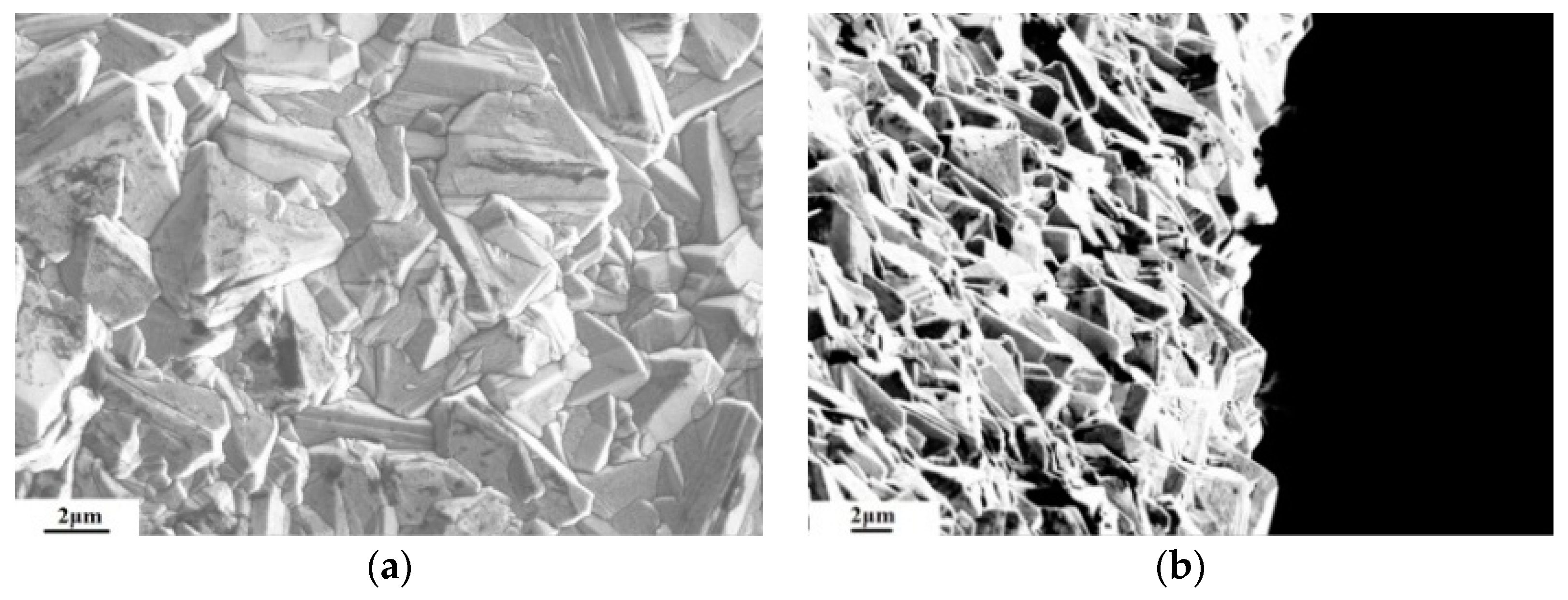
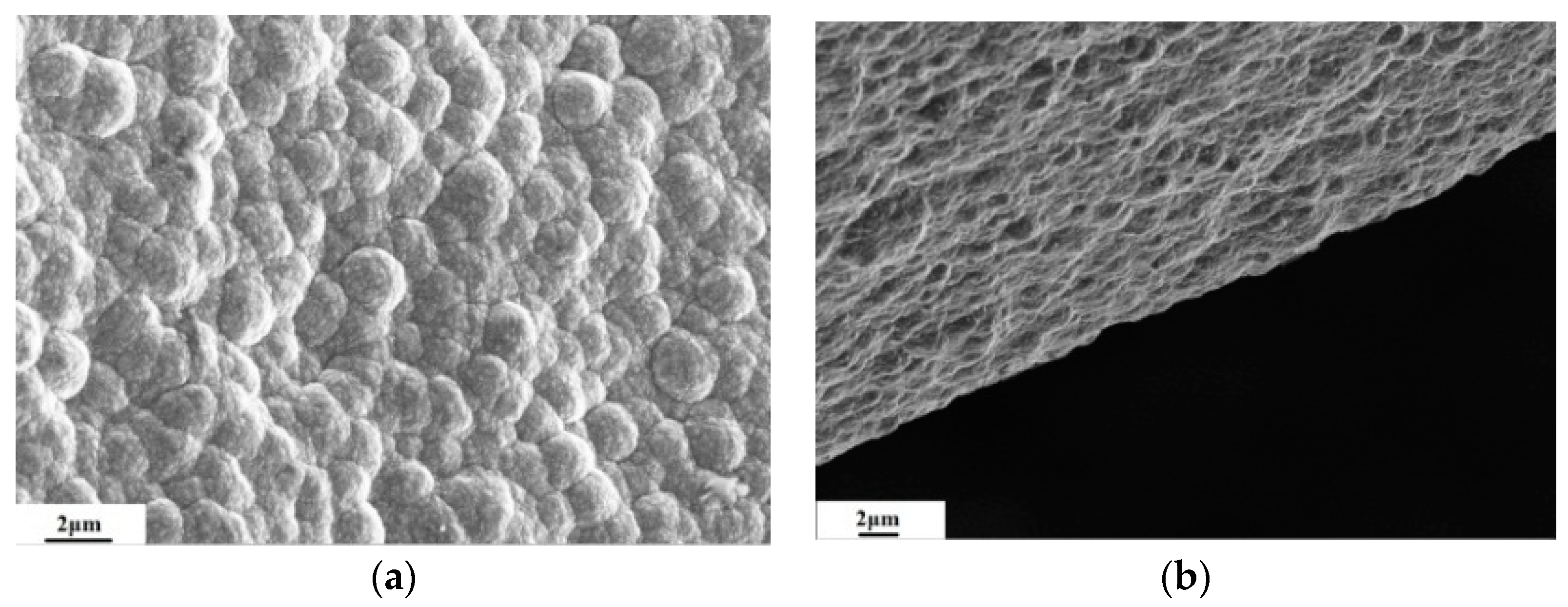


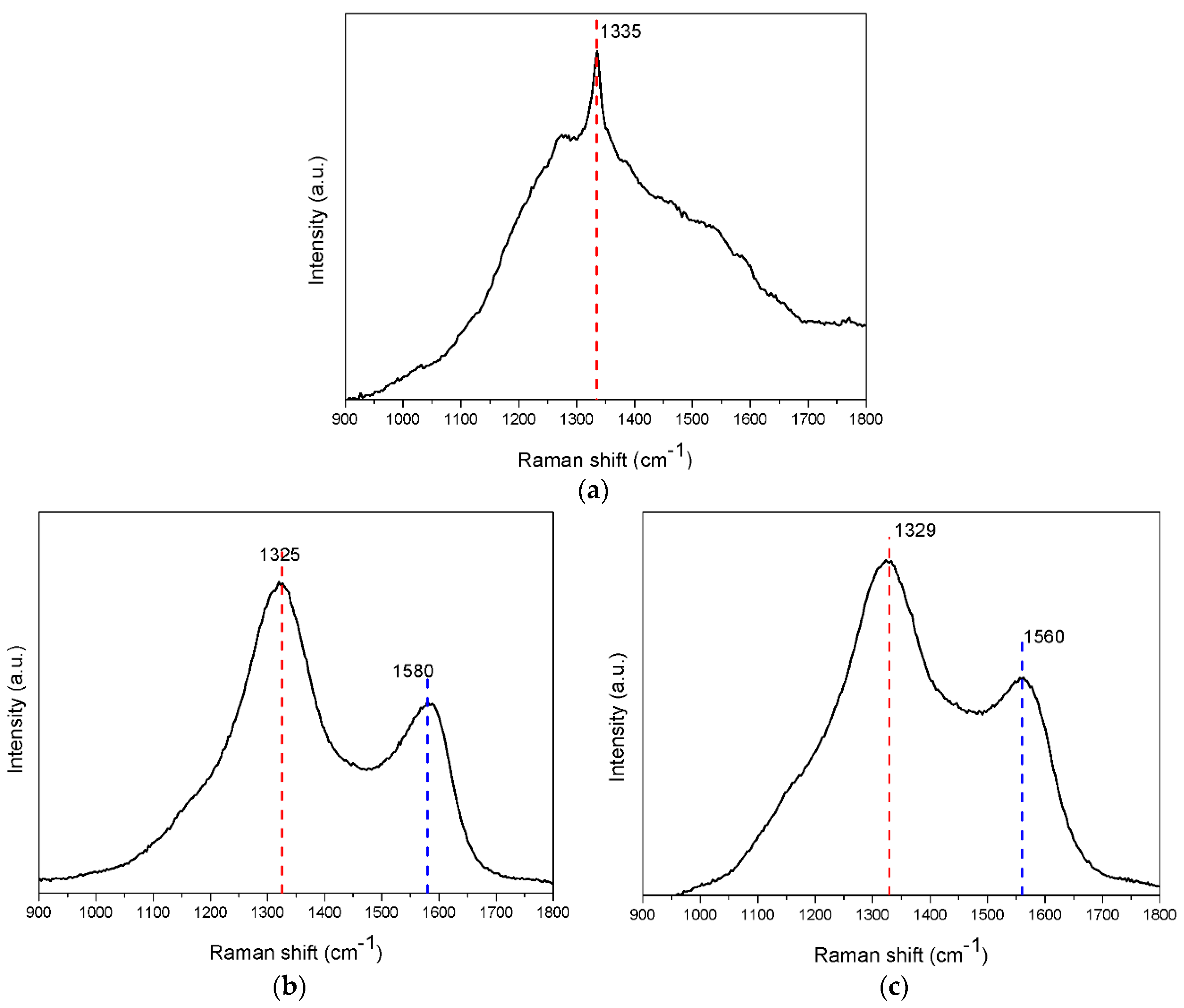
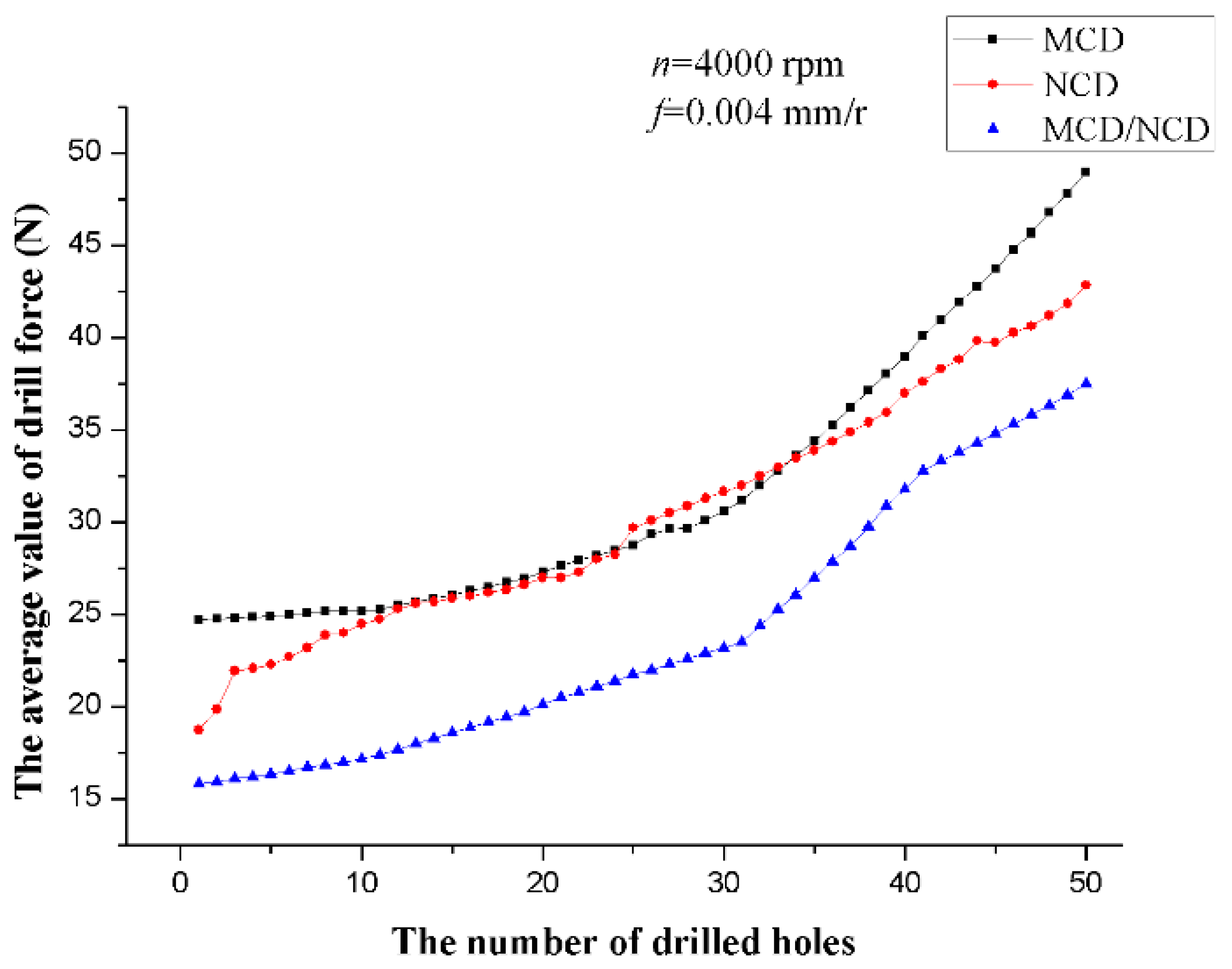


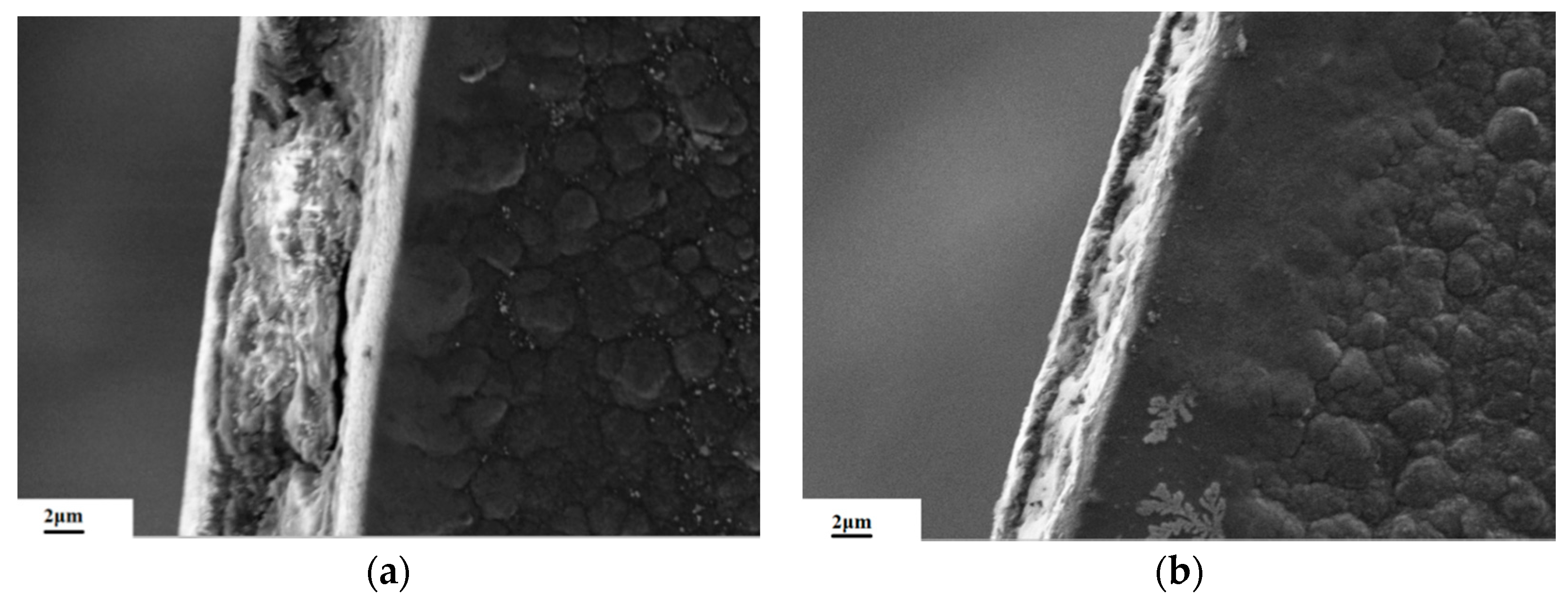
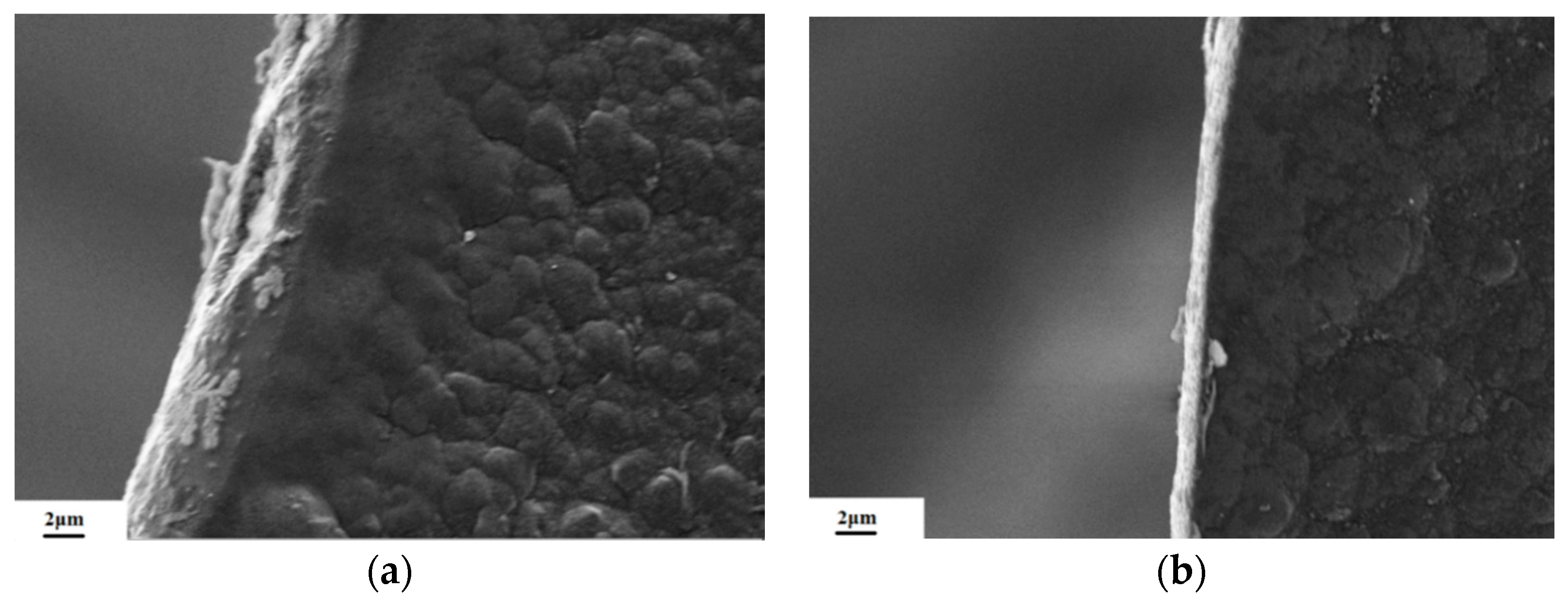
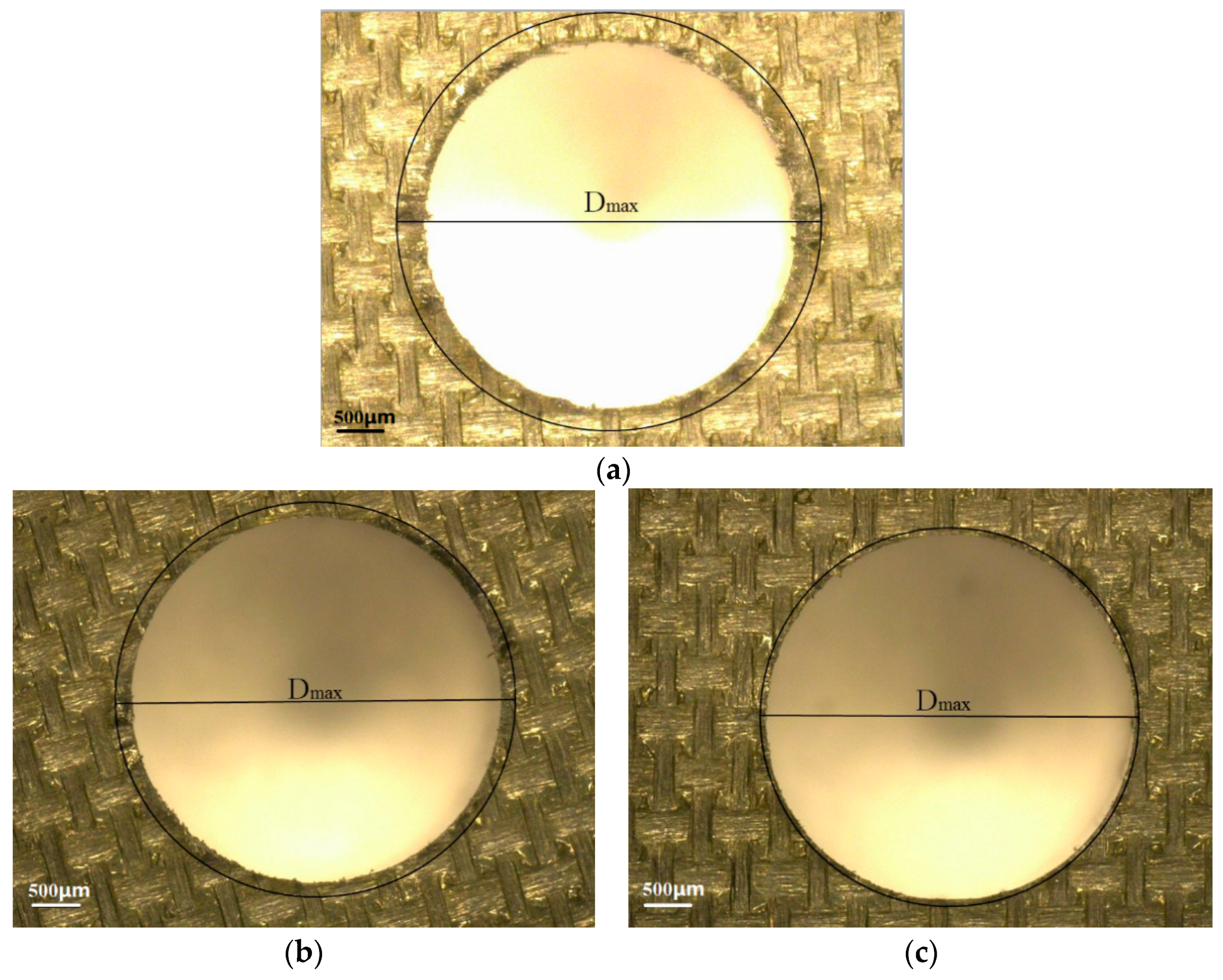
| Deposition Parameters | MCD | NCD | MCD/NCD | |
|---|---|---|---|---|
| Acetone/H2/Ar flow [sccm] | 80/200/0 | 80/200/200 | 80/200/0 | 80/200/200 |
| Pressure [Pa] | 4000 | 1300 | 4000 | 1300 |
| Filament temperature [°C] | 2200 ± 100 | 2200 ± 100 | 2200 ± 100 | 2200 ± 100 |
| Substrate temperature [°C] | 900 ± 100 | 900 ± 100 | 900 ± 100 | 900 ± 100 |
| Bias voltage/current [V/A] | 40/4 | 0/0 | 40/4 | 0/0 |
| Duration [h] | 6 | 6 | 4 | 2 |
© 2018 by the authors. Licensee MDPI, Basel, Switzerland. This article is an open access article distributed under the terms and conditions of the Creative Commons Attribution (CC BY) license (http://creativecommons.org/licenses/by/4.0/).
Share and Cite
Zhang, J.; Yuan, Y.; Zhang, J. Cutting Performance of Microcrystalline, Nanocrystalline and Dual-Layer Composite Diamond Coated Tools in Drilling Carbon Fiber Reinforced Plastics. Appl. Sci. 2018, 8, 1642. https://doi.org/10.3390/app8091642
Zhang J, Yuan Y, Zhang J. Cutting Performance of Microcrystalline, Nanocrystalline and Dual-Layer Composite Diamond Coated Tools in Drilling Carbon Fiber Reinforced Plastics. Applied Sciences. 2018; 8(9):1642. https://doi.org/10.3390/app8091642
Chicago/Turabian StyleZhang, Jianguo, Yigao Yuan, and Jinjiang Zhang. 2018. "Cutting Performance of Microcrystalline, Nanocrystalline and Dual-Layer Composite Diamond Coated Tools in Drilling Carbon Fiber Reinforced Plastics" Applied Sciences 8, no. 9: 1642. https://doi.org/10.3390/app8091642
APA StyleZhang, J., Yuan, Y., & Zhang, J. (2018). Cutting Performance of Microcrystalline, Nanocrystalline and Dual-Layer Composite Diamond Coated Tools in Drilling Carbon Fiber Reinforced Plastics. Applied Sciences, 8(9), 1642. https://doi.org/10.3390/app8091642





